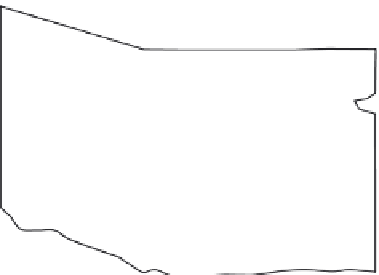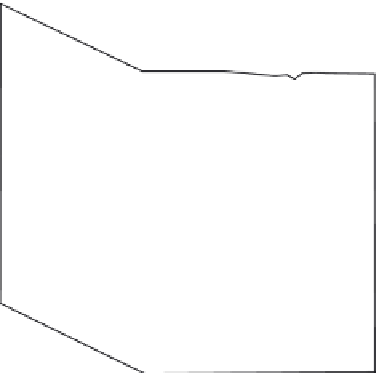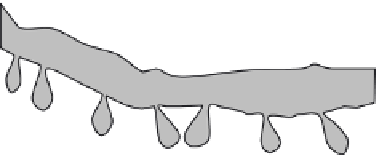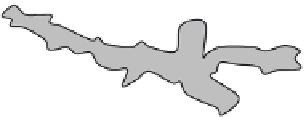Environmental Engineering Reference
In-Depth Information
C
B
X
A
X
Ths
Ga
Try
En
FIGURE 9
Schematic depiction of three chalk omission surfaces (A-C) illustrating the overprinting
of softground trace-fossil suites (
Zoophycos
Ichnofacies) by firmground and hardground trace fossils
representing the
Glossifungites
and
Trypanites
ichnofacies, respectively. Such a decimeter-scale
alternation of softground ichnofabrics and omission assemblages typify intervals of European chalks
(
Bromley, 1975; Kennedy and Garrison, 1975
) and likely reflect climate-driven scour cycles (
Bottjer
et al., 1986
). Omission surface (A) includes only a prelithification firmground suite of robust steno-
morphic
Thalassinoides
(Ths), reflecting resumption of sediment before significant sea-floor cemen-
tation. Exploitation of softer fills of firmground
Thalassinoides
by subsequently established softground
tracemakers may result in distorted, xenomorphic burrowmorphologies (X). At omission surfaces (B)
and (C), both softground and firmground ichnofabrics are cut by postlithification suites of borings,
including
Gastrochaenolites
(Ga),
Trypanites
(Try), and
Entobia
(En). As depicted beneath surface
(B), depositional hiatuses may result in dissolution and reprecipitation of silica to form flint nodules,
which commonly nucleate in or around crustacean burrows (e.g.,
Thalassinoides
) below omission
horizons.


































































































































































































































































Search WWH ::

Custom Search